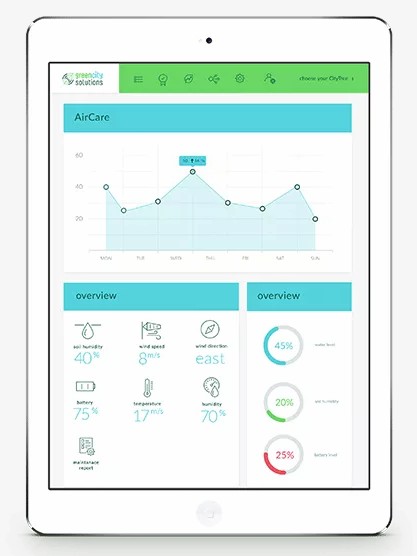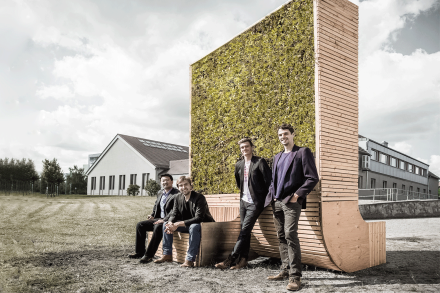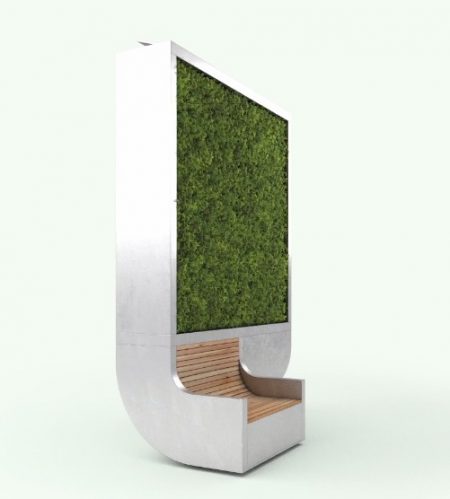August 4, 2017 – Toronto has an enormous tree canopy. If it didn’t, the summer heat island effect would be 1 or 2 Celsius degrees warmer than current. But for many concrete intensive cityscapes, tearing up the roads and sidewalks to plant forests would mean significant disruption.
Enter GreenCity Solutions’ CityTree, a vertical forest equivalent that looks like an over-sized advertising kiosk.
This urban island of green is not made from trees but it is alive and provides a benefit equal to 275 city trees. Largely composed of moss protected by shade plants, the CityTree is designed as a vertical wall containing a biomass of moss and other plants. The moss is particularly effective in cleaning nitrogen oxides, ozone, and particulate matter from the air while cooling its surroundings. The moss culture binds with pollutants turning them into biomass. The carbon footprint to build equals 4 tons. This is more than offset within a year of operation because each CityTree captures 240 tons of carbon dioxide annually.
A CityTree stands 4 meters (just over 13 feet) in height and 3 meters in depth (approximately 10 feet). It includes a built-in water tank, troughs for capturing rainwater, solar panels and a battery pack for energy independence, and sensors that measure soil humidity, nutrient levels, and general plant health. The sensors broadcast reports through the Internet giving operators comprehensive performance data and allowing them to make adjustments to any settings when warranted. Materials used are largely recyclables and assembly and disassembly takes less than 8 hours.

A CityTree cleans the air within a 50-meter circle, reducing air pollution by 30%. It does this while using 99% less space than its equivalent, a forest of 275 trees. Its cost can be offset, should a city choose, by advertising on its non-green surfaces. Currently, CityTrees are installed in a number of cities in Norway, France, Germany, Belgium, Macedonia, and HongKong.
The company is based in Germany and offers its clients location planning based on an assessment of environmental conditions, content and design services to meet local specifications, technical maintenance, and care including moves and disposal to ensure best sustainability practices.










